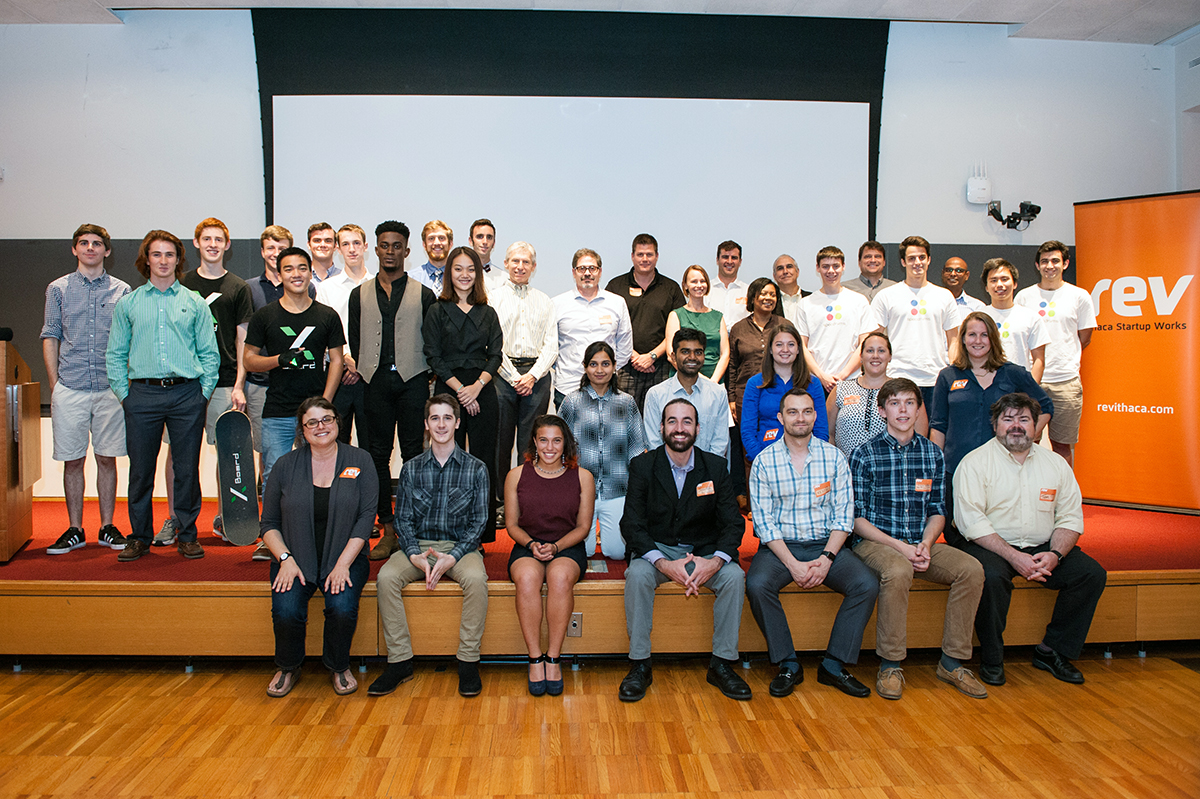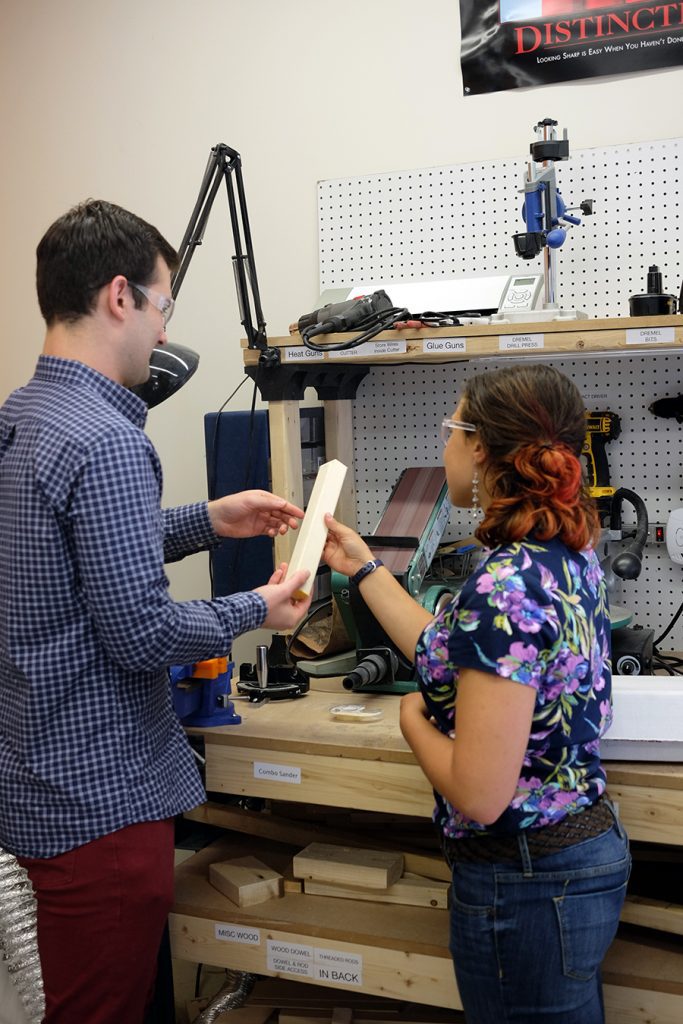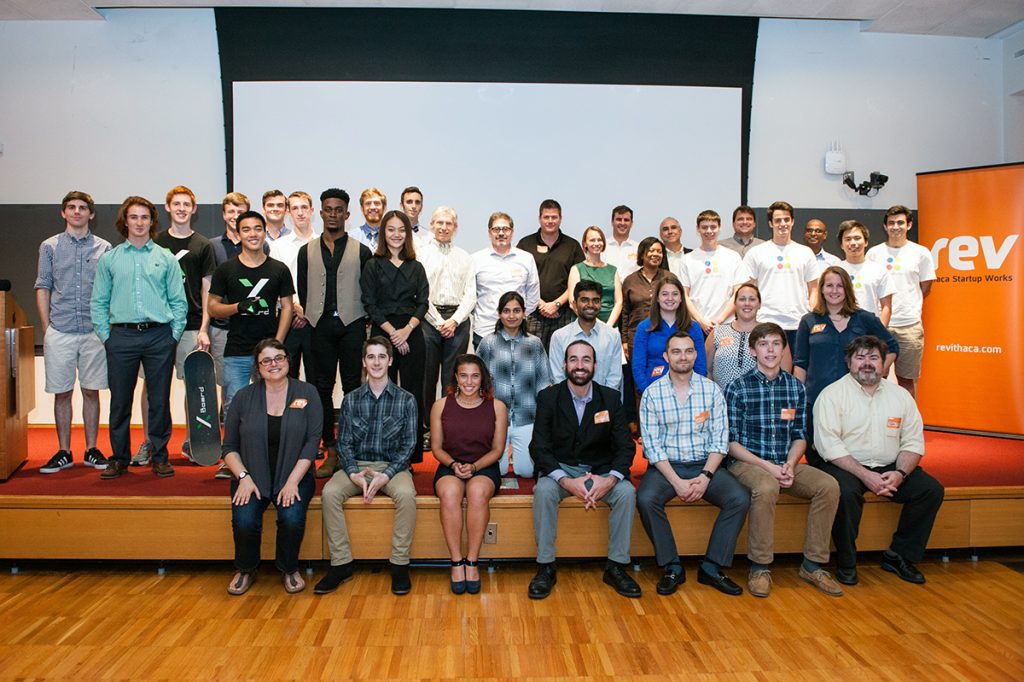
The New Inventors: Break it Down
In the Rev Hardware Accelerator, we help teams move from a “back of the napkin” idea to a prototype and a pitch: a prototype that they can test with customers and a pitch with which they can engage partners and investors.
Sounds good, right? But how exactly do we accomplish this over a brief eleven week period? We think big, but we start small. To be specific, we break this process down into 3 three-week design sprints with well defined product and business goals: Feasibility, Proof-of-Concept, Prototype & Pitch.
SKILLS CAMP (intro)
Before the sprints, we kick off the program with a four-day “Skills Camp,” during which we take our eight teams through a series of exercises to introduce them to both product development and business skills.
To introduce product development skills, we make cardboard and foam prototypes and then refine them in modeling software, such as SketchUp or AutoCAD. We wireframe (draw) apps with pencil and paper, then digitize them so they are clickable and testable. We build quick electronic prototypes with Arduino, then iterate with IoT-enabled boards.
To introduce business skills, such as customer discovery and project management, we craft value propositions, assumptions, and questions for customers so that we can test our assumptions. We share project management tips so that our teams are in a position to work effectively.
FEASIBILITY (sprint 1)
In this first sprint, our teams spend a lot of time exploring their options for building a product while simultaneously learning about what their customers want. It’s important for our teams to work fast and loose on a product, to learn not to hone in on feature sets too quickly before understanding their customers. This is usually a big challenge for our teams because many of them are skilled engineers and want to make their product right the first time. The first sprint involves a lot of exploring, but it’s actually more about learning how to be an explorer.
PROOF-OF-CONCEPT (sprint 2)
In the second sprint, our teams get to return to their comfort zone of focusing on product features. After talking to potential customers, they have tested the assumptions they’ve made about their target market, and thus have a clearer picture of the work to be done. They can now construct a “Product-Market Fit pyramid,” which helps them identify the features that they need to build and test. If they were prototyping with Arduinos, for example, they are ready to move to IoT-enabled boards. If it’s a wearable product they are working on, they might use a board with 3G or bluetooth LE, whereas with a more stationary object they might choose a board with wifi. We also do a lot of mapping in this sprint; teams draw diagrams of their tech stacks (firmware, hardware, communications, and apps), map out their user experience design (triggers, feedback, and loops), and continue to refine their business model canvas.
PROTOTYPE & PITCH (sprint 3)
In this final sprint, teams focus on doing a small production run, ten or so units, that they can give customers to test. On the business side of the project, they turn their attention to Demo Day, when our teams share with the community what they’ve been working on. The event is both an exhibit and a pitch marathon, so our teams have to prepare for both. They are crafting and practicing a clear and concise pitch that shows their knowledge of the product’s market, their passion for their start-up, and their technical creativity. On the product side, many teams have designed custom boards and are feeling the pains of design-for-assembly (D4A) and quality assurance (QA), as they populate and test their boards before integrating them into their refined prototypes.
DEMO DAY (finale)
Demo Day feels like that moment on “Master Chef” when the clock runs out and Chef Gordon Ramsey shouts “Hands in the air!” Our teams hustle all summer long to be creative and to execute their creativity with precision – it’s exhausting. But no matter how far along they are with their prototype and pitch, Demo Day is when they’ll be serving up their product. They know their work isn’t done, but it’s time to show it to the public and ask for help. And it’s an excellent opportunity for our teams to find partners. A phrase we often hear at the event is “I have someone I’d like to introduce you to.” We love hearing that phrase. It validates our assumption that if eight teams spend their summer moving through these sprints, their hard work and creativity will shine so brightly that folks in the audience can’t help but to be dazzled and want to be a part of it.
The New Inventors is written by the Hardware Accelerator team at Rev. The Hardware Accelerator’s flagship program is a 12 week Summer Intensive, which takes teams from problem to prototype to pitch. Lean more about the Rev Hardware Accelerator here.
Is there a theme you’d like to learn more about in a future blog? Please get in touch with us at [email protected]. We love hearing from local innovators!



